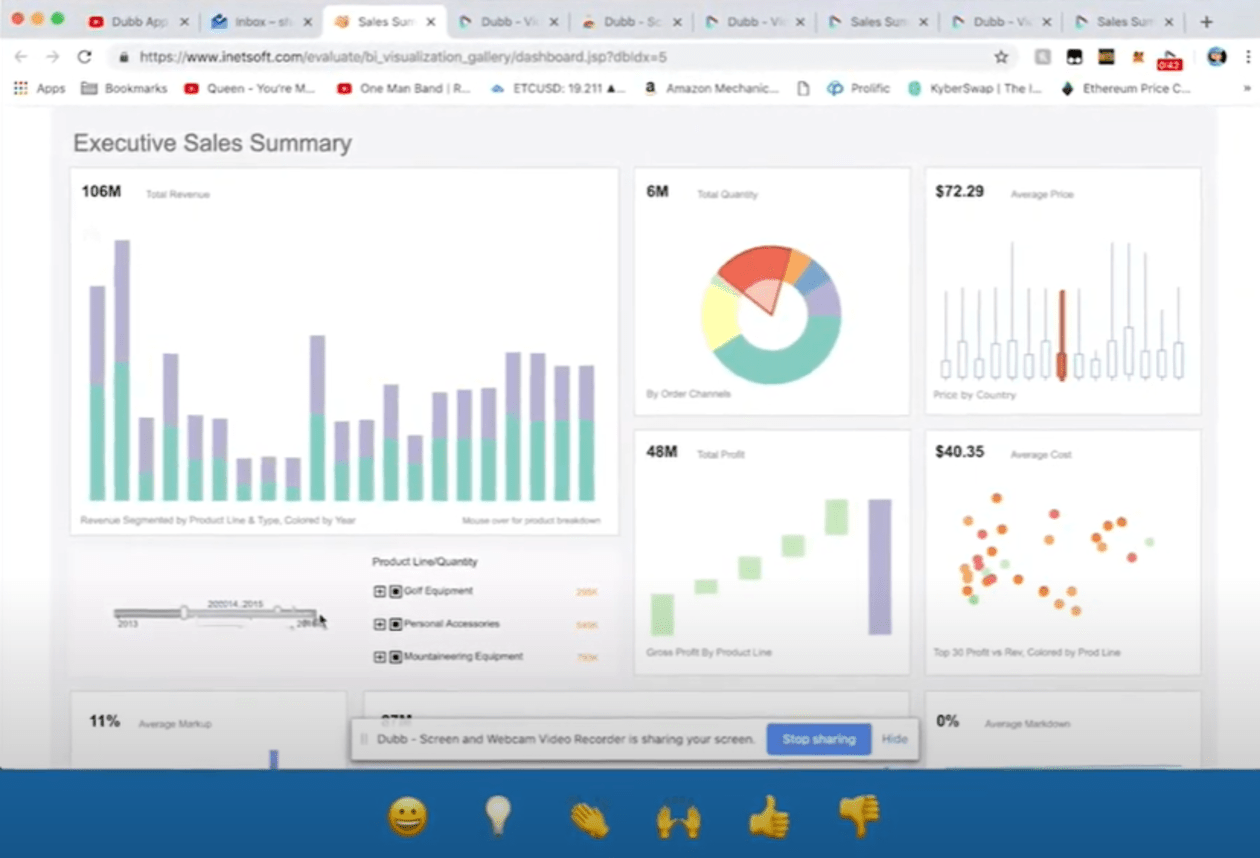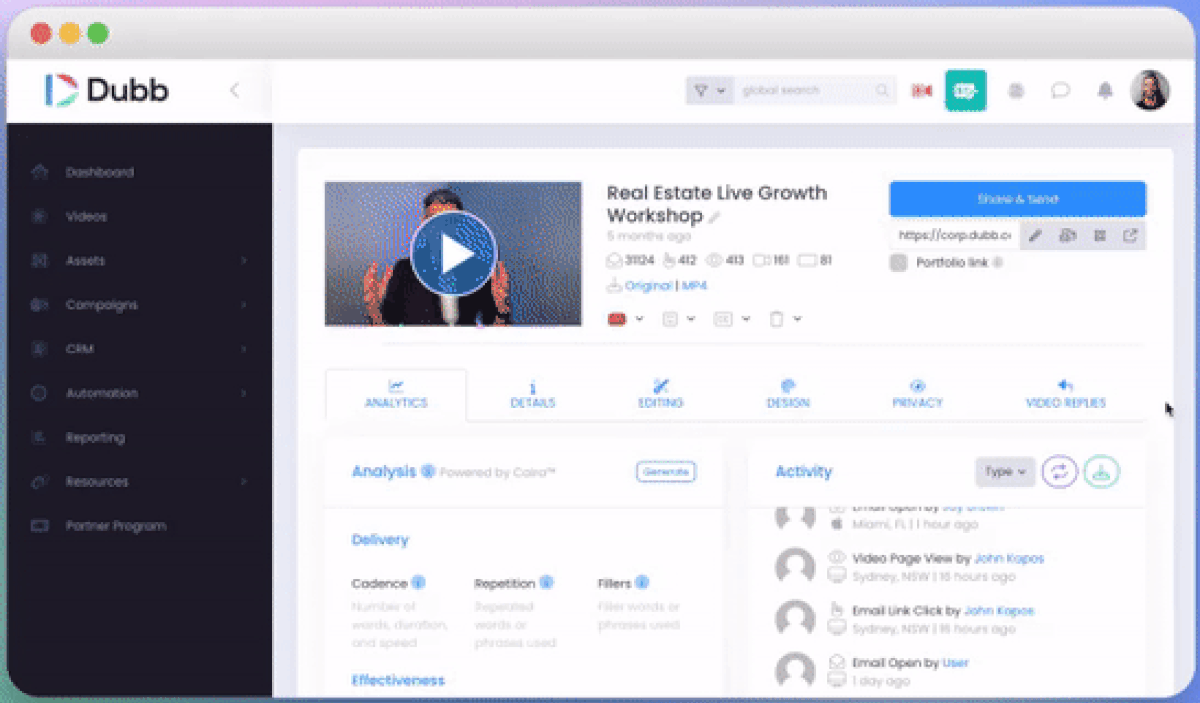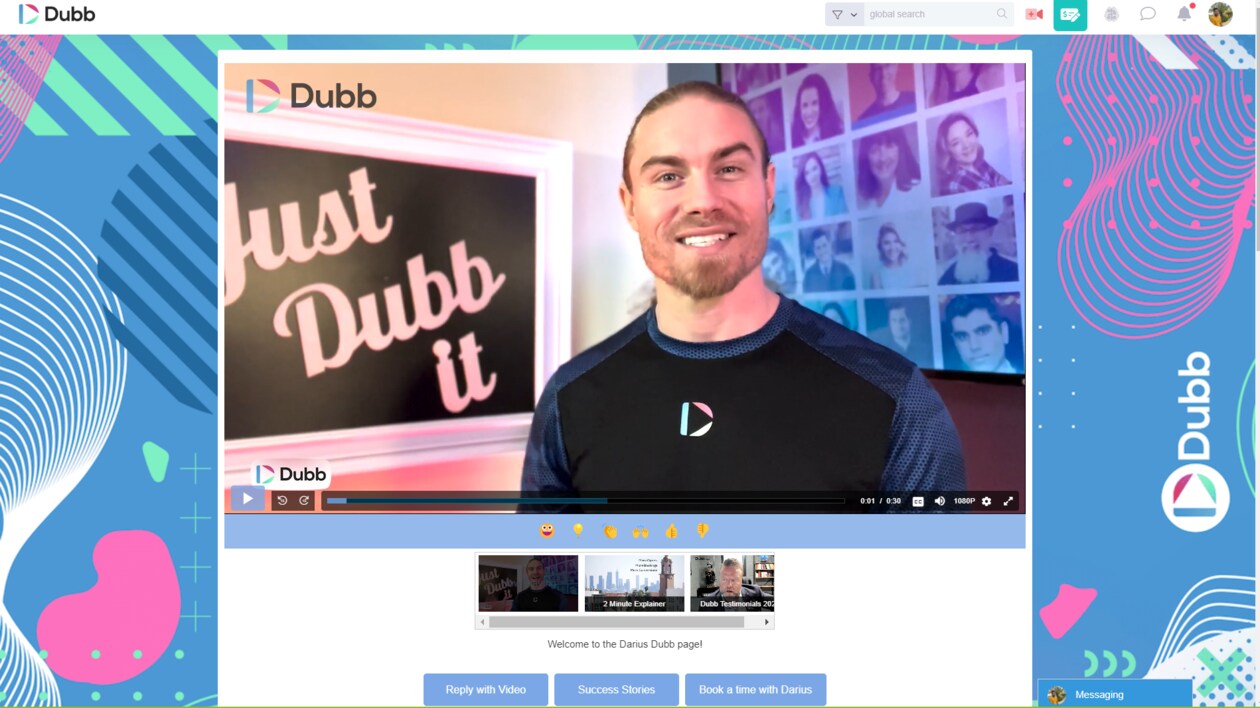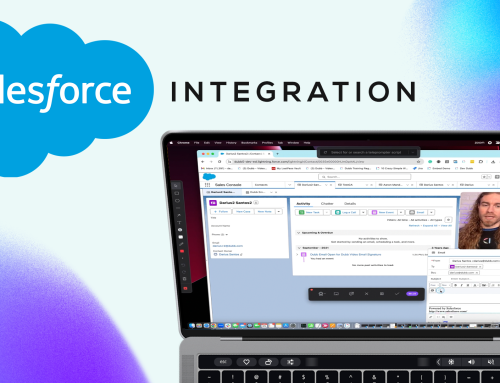The question of how to do sales videos is one on the minds of many sales professionals, marketers, and creators. Sales videos are terrific tools that can help you build strong relationships, educate new audiences about your product or service, and help you generate more sales. It is as simple as that.
At the same time, actually making and sharing those sales videos can be a different story. For some of us, creating digital content and sharing it online is second nature. But for others, it may be an unfamiliar (and perhaps intimidating) process.
Because of this, I want to use this blog post to talk about how to do sales videos. You may be a new sales professional looking to unleash the power of video or an experienced sales manager who is looking to get more out of your sales videos. Whatever the case may be, this guide is for you.
Focusing on Revenue

To start this conversation, I think that it’s critical to talk about a key sales principle. Essentially, everyone, regardless of their role or rank in your company, is responsible for driving revenue in some capacity. Even if an individual isn’t on your sales floor or isn’t interacting with clients or prospects, they need to drive revenue for the business. It’s a foundational principle and something that you (and your colleagues) cannot ignore.
But it isn’t sufficient to just recognize its importance. You will undoubtedly want to be tracking how much revenue your employees are bringing in. You can do something as simple as calculating average revenue per employee (total revenue divided by total number of employees). From here, you can easily compare your company’s productivity compared to your peers and competitors. You can even set ambitious revenue goals using uber-successful companies like Google as your model.
It may seem strange to kick start a conversation on sales videos by talking about your average revenue per employee. However, I think it’s important to do so because it helps you and your entire team recognize the power of sales videos.
Everyone can create sales videos—even if you aren’t interacting with clients on a daily basis. And now, with increasingly sophisticated artificial intelligence technology, it is even easier to create professional, engaging videos that your audience members will love.
Some Challenges and Why Sales Videos Are So Powerful
So from that point, let’s talk about sales videos themselves. Whether you are the CEO, head of sales, a real estate agent, a coach, or a consultant, you will quickly see how video can be one of your best friends to build your pipeline. There are plenty of reasons for this and it’s important to understand them as we answer the question of how to do sales videos.
But let’s start with some realities and challenges. In the sales world, I would argue that there are several important challenges.
First, there is so much noise. The competition is fierce. Because of this, consumers often feel fatigued and inundated. Basically, it feels like “inbox exhaust.” This leads to a media block and lost trust. In the worst types of cases, this can lead to foregone sales and less revenue for your company.
From there, it can be difficult for prospects and clients to take action. This is a problem that most of us have. We may be interested in a new product or service, but it’s a different story when you actually have to put money on the line and make a purchase. When you are on the other side (trying to actually sell that product or service), helping your prospect take that extra step can be extremely difficult. As you’ll see below, sales videos can be a major asset here.
Finally, there is the problem of valueless content. Not every sales professional creates sales videos or other types of digital content. The fact that you are creating sales videos in the first place puts you in good company. With that said, you need to make sure that your videos are actionable and that they provide value to your audience. While this is easier said than done, practice makes perfect here. No matter your product or service, you can create sales videos that are both valuable and actionable.
So considering all of these challenges, why invest in sales videos? As you can probably guess, sales videos offer some key benefits that can address these challenges and help you get closer to your sales goals. Specifically, sales videos provide immense value by:
- Garnering attention and improving comprehension: Simply put, as humans, we are visual creatures. We have a greater attention span toward images and video compared to text. Consequently, by creating sales videos, you are already off to a great start. One study showed that humans process images 60,000 times faster than text. It is a huge number and one that you will have on your side when creating sales videos.
- Building trust: Sales videos are tailor-made to build trust. Compared to listening to a voice note or reading a text message, sales videos help you really get to know the person on the other side of the screen. You can see their body language and hear their tone of voice. Your sales videos can be amazing tools to build long-lasting, parasocial relationships with essentially anyone. They are that good at building trust.
- Building parasocial relationships: Parasocial relationships are types of relationships that people can build with others. However, compared to other types of relationships, these are ones where one party may not necessarily know the other. It’s like millions of fans having a relationship with Taylor Swift even though she doesn’t know every single person. When you are creating sales videos for a large audience, you may not necessarily know everyone who is watching your videos. Critically, however, they know you. Parasocial relationships built through sales videos let you build connections at scale, saving you time and increasing the odds that you hit your revenue goals.
- Conveying value and preventing “salesyness”: Finally, sales videos are great ways to show how you can improve your audience members’ lives. Sure, you can be salesy and over the top with sales videos, but ironically, that’s a really ineffective way of accomplishing your goals. Instead, video gives you the opportunity to provide value in virtually any way that you’d like.
- They can help you generate more sales: This is obviously the end goal of sales videos. Sure, we want to build relationships and educate our audience members on a variety of things. But at the same time, we want to generate sales. Like I discussed in the first section, we need to ensure that all of our colleagues are doing their part to generate more revenue. The great news is that sales videos can generate more sales. All of the work that you put into creating content, editing it, and sharing it can lead to lifelong customers.
In the end, this question of how to do sales videos must touch upon why you want to create sales videos in the first place. As you can see, there are plenty of benefits, from increased trust to actual dollars in your pocket. For many of the things that you are trying to accomplish, sales videos can help you get the job done.
How To Actually Record Sales Videos and Convert Prospects

With all of that said, I now want to talk about the how. There are plenty of ways to go about creating your sales videos. In the end, however, the goal is the same. We want to convert interested prospects into raving fans. We want people to receive immense value from our sales video. We want them to trust us and, consequently, purchase our products or services.
Preferably, you should start by targeting warm leads. As you probably know, studies show that it is much easier to generate business from existing contacts than from new contacts. If you are getting started from scratch, it’s a great idea to send your sales videos to those who are already in your book of business. If you don’t have that, however, you can acquire cold leads through social media and/or dedicated websites (like ZoomInfo).
However you choose to do this, you’ll next want to settle on video ideas. I always recommend that sales professionals create a content calendar. A content calendar can keep you organized and be the central hub for all of your sales video ideas. But putting that aside, this is the exciting part. You can create sales videos in virtually whatever way you’d like.
As far as formatting, your sales videos can be created in these types of ways:
- Webcam videos: Here, you are using your device’s webcam to record a selfie video. You can also use the webcam to record a conversation that you are having with your colleagues or any other type of stationary video idea.
- Screen recording videos: These are videos where you record the activity on your screen. These can be great ideas for sales videos if you want to show off a digital product or service.
- Mobile videos: These are videos that you record on your smartphone. Our smartphone cameras are so good now that you can create professional quality videos wherever you are. Whether you are at your office or are on the go, you can create awesome sales videos that your audience will love.
- Testimonial videos: These are really powerful ways to build trust and social credibility with any audience member. These videos include one (or several) clients speaking about how happy they are with your product or service. I highly encourage you to try this type of video at least once.
And as for the videos that you want to create? I think this is one of the most exciting things. Really, the sky’s the limit here. You can create a video where you talk about a new product or service. You can provide a behind-the-scenes look at your company. Or you can talk about important industry news that may affect your customers. However you choose to do it, there are really no limits here. Just make sure that your content is valuable to your audience members.
Once you have finished creating your sales video, you’re going to want to host it on a video landing page. You can think of a video landing page as the central hub for a specific video. On that video landing page, you can include everything from your brand’s logos and fonts to call to action buttons below your video.
These call to action buttons are especially valuable because they can prompt your audience members to do certain things. For instance, you can program a button so that the viewer can easily sign up for your email list. Your button can be programmed so that the viewer can respond to your sales video with a video of their own. It can even be a button to purchase your product or service.
Whatever you choose to do, make sure that you are making your sales videos actionable. You want your viewers to be moving down your sales pipeline so that they can take action and become paying customers. That is your North Star here and something that you shouldn’t ignore.
Track Your Performance

Once you have gotten in the habit of recording sales videos and sharing them with your audience members, you will want to start tracking your sales videos’ performance.
In this discussion of how to do sales videos, it’s pretty clear why you would want to do so. Tracking the performance of your sales videos lets you see which sales videos are resonating and which ones aren’t. In other words, they help you better allocate your time and ensure that you spend more of your energy on the videos that will actually convert. Once you understand what is working, you can spend more time incorporating those elements into your future sales videos.
So what exactly do you want to track? While it’s up to you, there are several different metrics that you’ll probably want to focus on.
For one thing, take a look at the percentage of your videos watched. Sure, looking at the sheer number of viewers for a particular sales video can be important. It’s exciting if one specific video has a growing audience (or going viral). On the other hand, the percentage of video watched reveals whether your message is actually resonating with your audience. It reveals whether your video is valuable (which can mean different things in different circumstances).
Along with the percentage of videos watched, you’ll want to view specific viewers’ open rates and finish rates for your videos. After all, we are talking about sales videos here. It is extremely helpful to see whether certain prospects (particularly warm leads) have watched your sales videos. Using a tool like Dubb, for example, you can get this data extremely easily and use it to better interact with your warmest prospects. I’d highly encourage you to look at this granular data as you engage with your leads and work to hit your sales goals.
Finally, I’d encourage you to take a look at your call to action responses. Like I mentioned above, call to action buttons are critical for all of your sales videos. They can make the difference between a prospect becoming a new customer and a prospect leaving your company for a competitor. Frequently, you should be seeing how your call to action buttons are performing for your sales videos. As a simple rule of thumb, you should keep the high performing ones and exchange the low performing ones for something else. Keep experimenting and you’ll find that your call to action buttons drive significant conversions for your business.
Ultimately, Peter Drucker once said, “You can’t improve what you don’t measure.” I urge you to keep this in mind as you are creating and sharing your sales videos. You will be happy that you did.
Finding New Clients

We started this blog post with the question of how to do sales videos to strengthen your pipeline. As you can see, there are plenty of ways to do so. Whether you are trying to find your next few leads or convert your warmest leads into paying customers, you can do so with the power of sales videos.
When you are creating your sales videos, I highly encourage you to check out Dubb. Dubb is a video communications platform that can help you make more connections, create beautiful video content, and generate more sales. Dubb offers plenty of tools to help you create outstanding sales videos and generate more sales, including the Dubb mobile app, Dubb video landing pages, IRA AI assistant, and more.
If you want to learn more about Dubb, feel free to click here. You can also click here for a free 14-day trial of our premium plans (no credit card required). Don’t hesitate to sign up today!





Leave A Comment